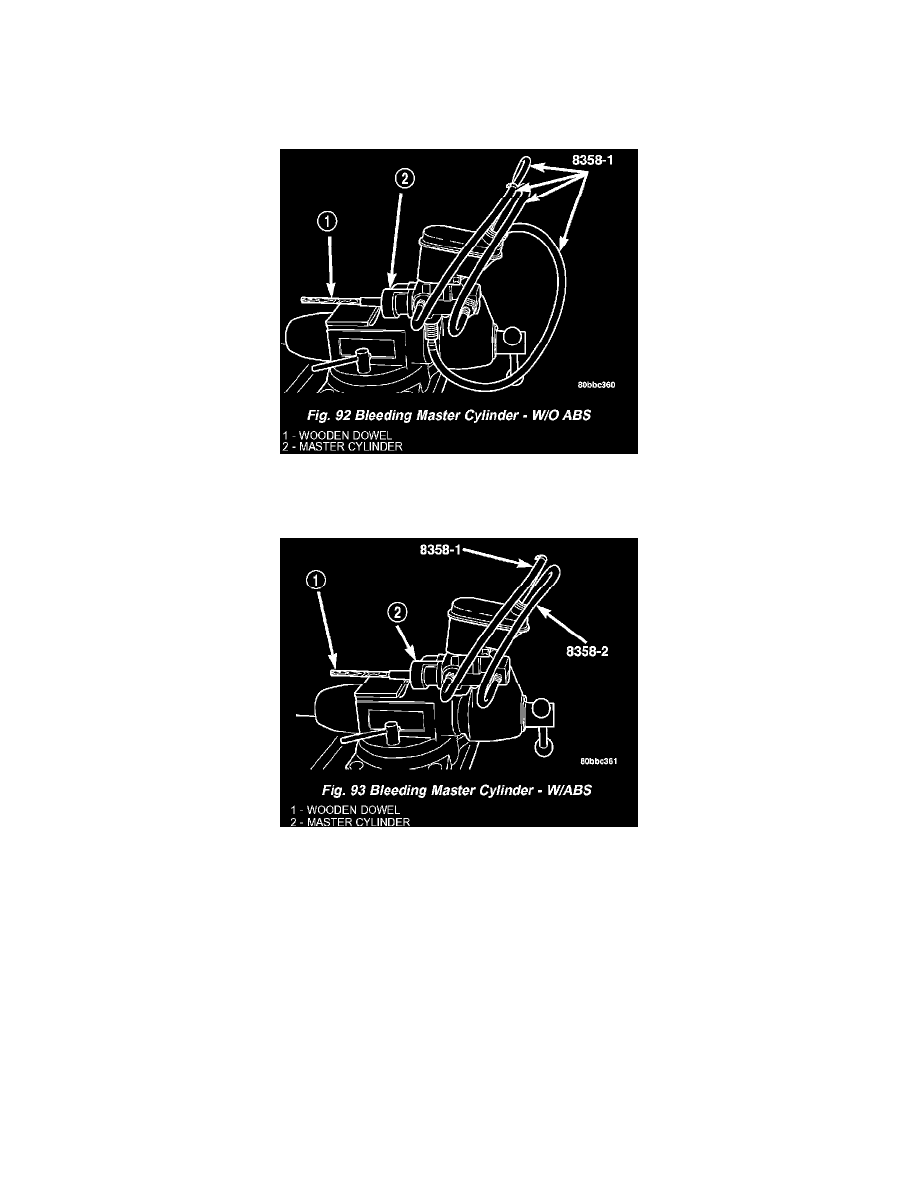SRT-4 L4-2.4L Turbo VIN S (2004)

Brake Bleeding: Service and Repair
Master Cylinder Bleeding
STANDARD PROCEDURE - MASTER CYLINDER BLEEDING
1. Clamp the master cylinder in a vise.
2. Refer to one of the following depending on whether the master cylinder is a non-ABS unit Step a: or an ABS unit Step b:
a. Attach four Master Cylinder Bleed Tubes, Special Tool 8358-1, to the four ports of the master cylinder and tighten each in place (Fig. 92). The
bleed tubes for the ports pertaining to the rear brakes are made to attach to the proportioning valves screwed into the master cylinder. Position
the other end of the tubes into the master cylinder reservoir so their outlets are below the surface of the brake fluid in the reservoir when filled.
b. Attach Master Cylinder Bleed Tube, Special Tool 8358-1, to the primary port of the master cylinder and tighten in place (Fig. 93). Attach
Master Cylinder Bleed Tube, Special Tool 8358-2, to the secondary port of the master cylinder and tighten in place. Position the other end of
the tubes into the master cylinder reservoir so their outlets are below the surface of the brake fluid in the reservoir when filled.
3. Fill the brake fluid reservoir with fresh Mopar brake fluid, or equivalent conforming to DOT 3 specifications.
4. Using a wooden dowel as a pushrod (Fig. 92) (Fig. 93), press the pistons inward slowly applying brake pressure, then release the pressure,
allowing the pistons to return to the released position. Repeat this several times until all air bubbles are expelled out of the tubes and master
cylinder bore.
5. Remove the bleed tubes from the master cylinder and plug the outlet ports.
6. Install the fill cap on the reservoir.
7. Remove the master cylinder from the vise.
